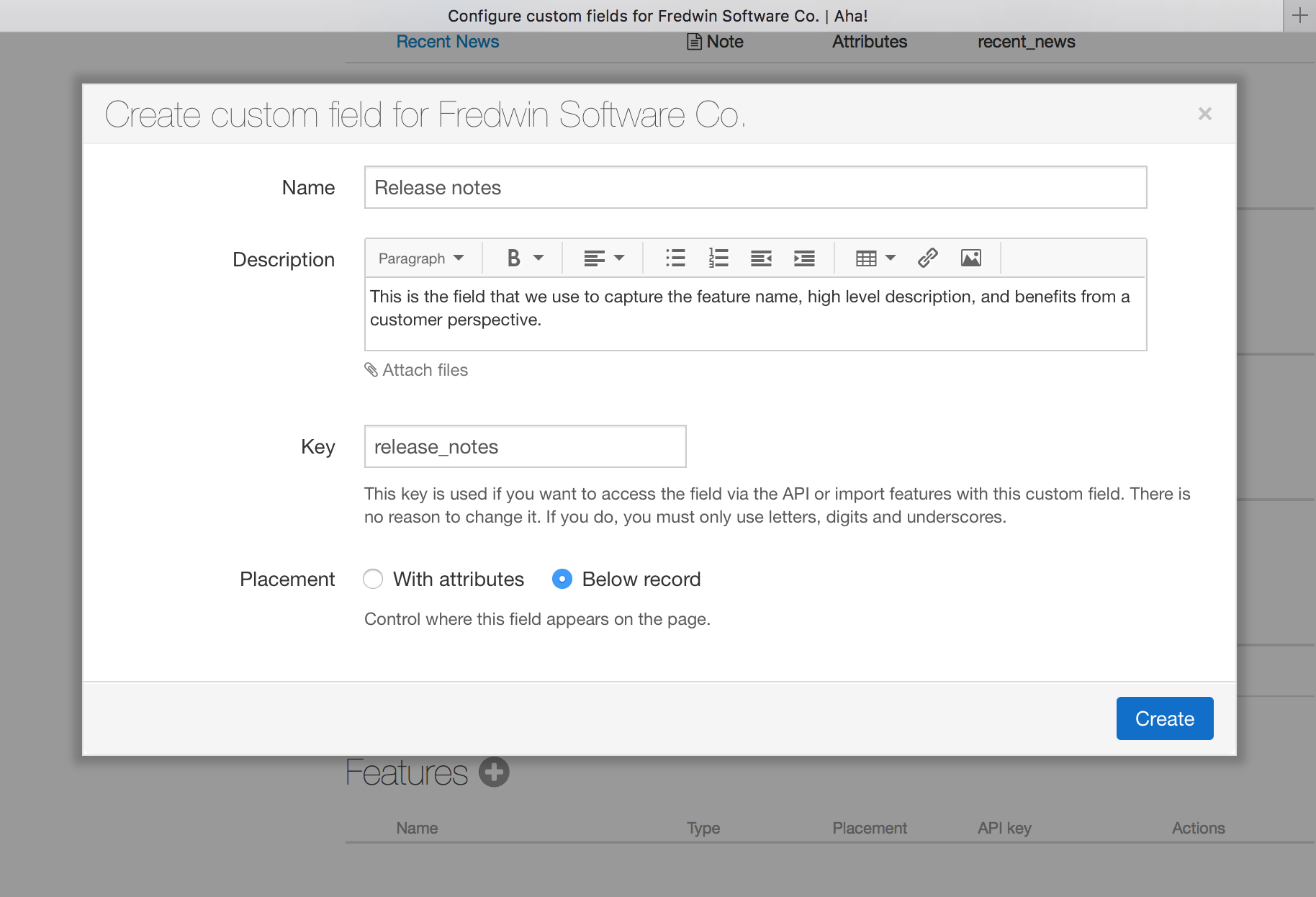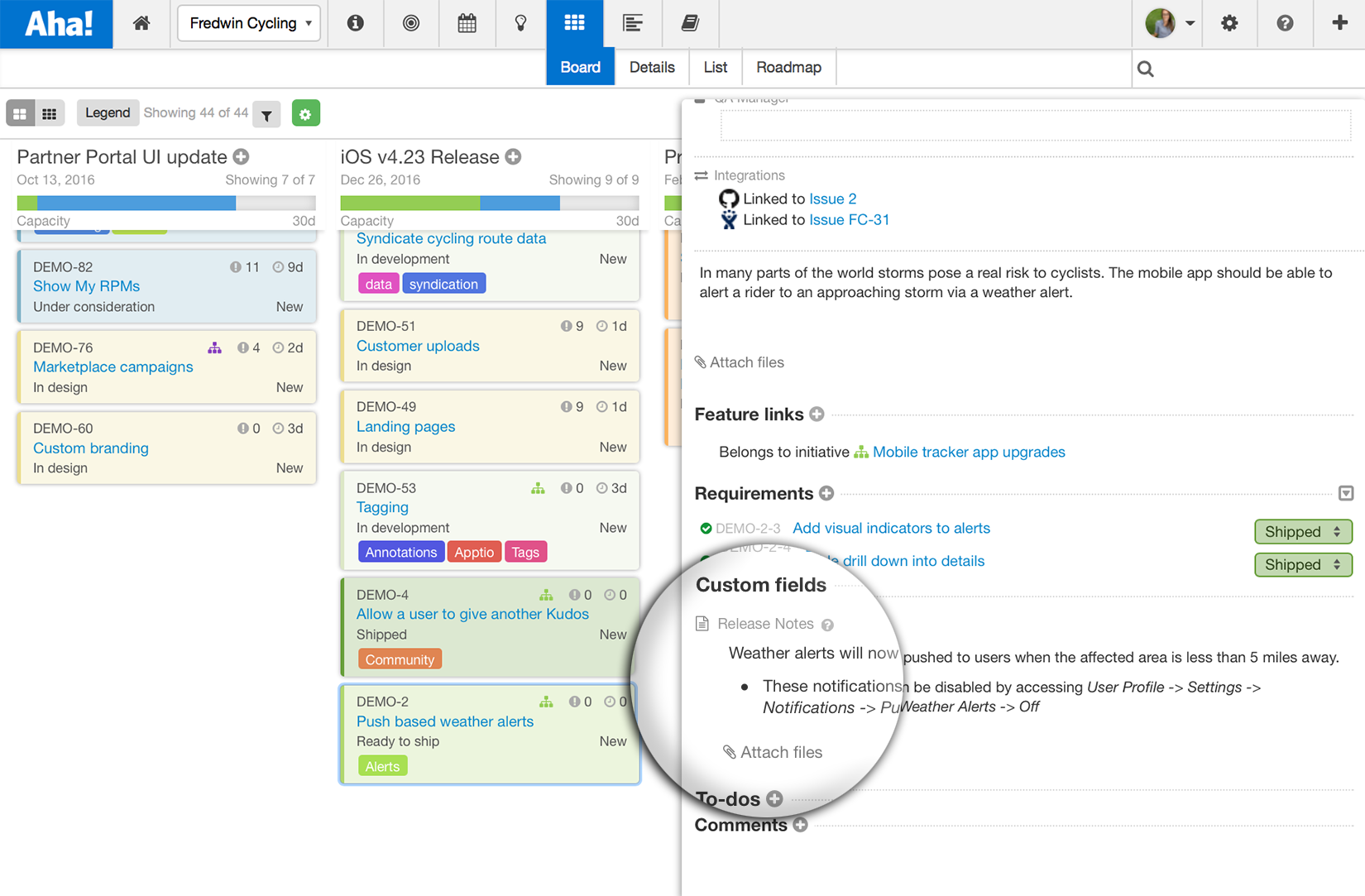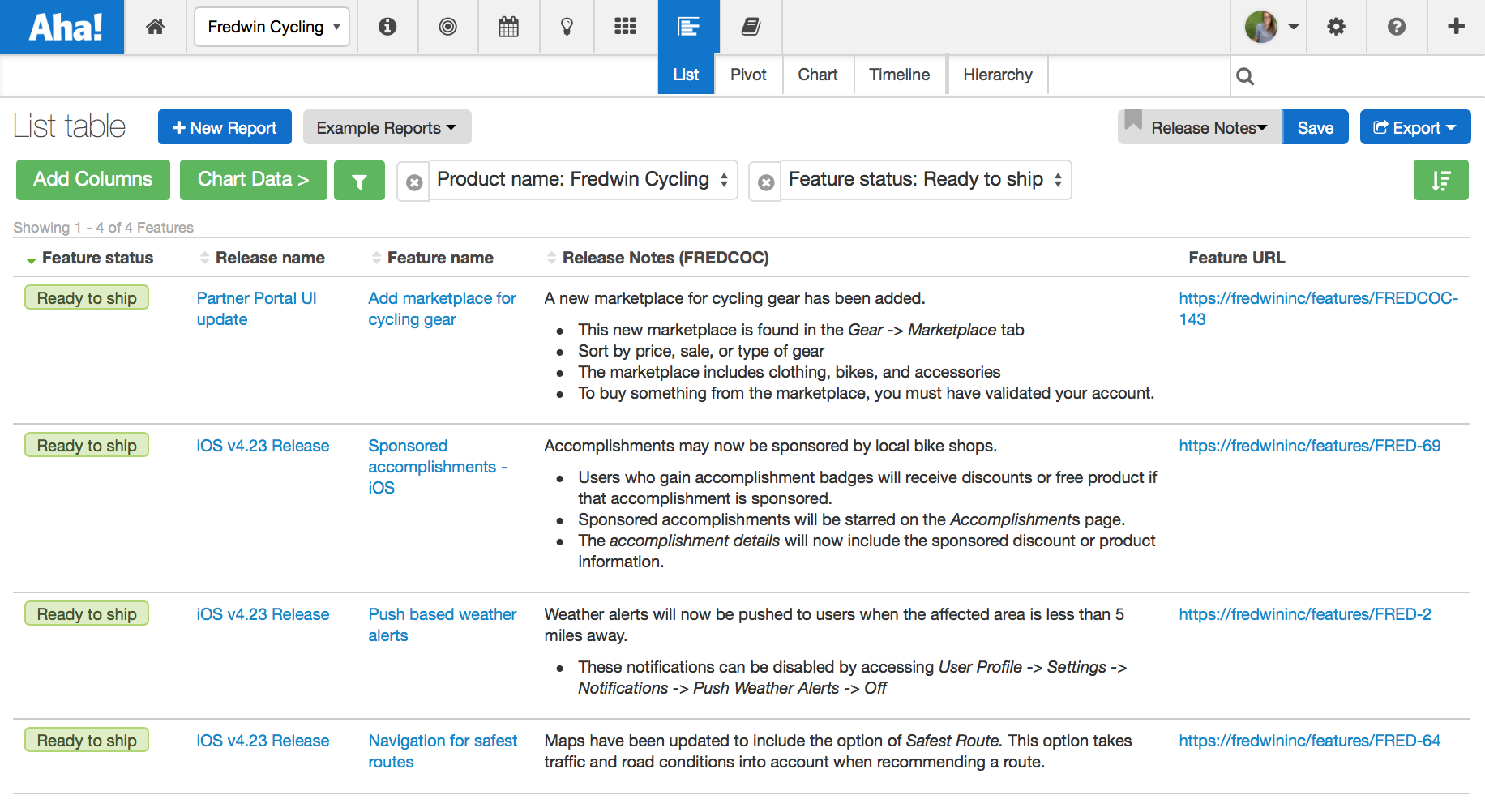
Those Pesky Release Notes and Product Management
Release notes are unglamorous — unless you need to know what was just released. There’s no shame in admitting they they are a pain to write and often get ignored.
Yet it’s critically important for your product development team to complete them if you are working in a mid- or large-sized software or web company, or in a growing business with lots of end users who need to know what’s new. Release notes are a key way to share with internal stakeholders and customers what’s fresh or changed in your software or service.
Unfortunately, most teams never create them, because they do not have a good tool to track features and their corresponding release notes in one place.
Release notes may be written by a technical writer or any other member of the product, development or test team. Oftentimes it’s a collaborative process that is part of the product launch process. The key is to make sure to at least capture the name of the feature, a short description, and the benefit of the functionality or bug fix. It’s even better if you can add a few diagrams and screenshots to explain how it works.
And just because you are agile is no excuse not to document what you just released. The rest of the organization still needs to know what went out the door and why it matters.
The challenge has historically been that it is difficult to track what was implemented and have easy access to the roadmap, feature descriptions, and requirements in one place. Aha! makes it easy to draft release notes and attach them directly to the features. You can add release notes by using the Custom fields control in Aha! under Account settings. Choose the Notes custom field and position it at the bottom of the page below requirements.

This kind of information gives readers of the document a total view of what was delivered and the benefit of the new functionality. Capturing them as you are doing your release planning makes it easier to share or export the data when you are done. And it definitely makes it easier for someone else to write the release notes, even if they are not in product management or engineering.

Release notes are typically circulated only after the product or service has been tested and the features are live. They are also an excellent mechanism to capture the critical information for user guides, marketing materials, and revisions to training materials.





